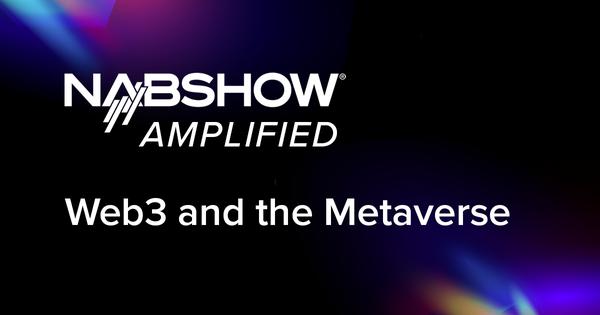As part of the annual conference of the National Association of Broadcasters, the NAB Show, which took place April 23–27 at the Las Vegas Convention Center, attendees had a chance to explore the metaverse. Leading the exploration was moderator and tech and entertainment veteran Mike Fischer, consultant at Aluma Insights. Fischer was joined by Bjorn Book-Larsson, VP of Product at Roblox, and Ash Koosha, Co-founder and CEO of Oorbit.
Roblox is an online game platform and game creation system that allows users to program games and play games created by other users, by means of a custom programming language. It debuted in 2006.
Oorbit, a new company, funded in part by Mark Cuban, provides online arcades and access to game engines and virtual worlds, using blockchain technology.
What Is It?
You might think that “metaverse” is just a new word for the Internet. Not exactly.
Developers define the metaverse as a collective shared space. Like a city park? Sort of.
When you go to the park, you are you. When you go to the park down the street, you are still you and may see some of your friends from the other park. This is in contrast to traditional video games and online environments where each game world is disconnected from all the others, and you don’t carry any characteristics or identity between them.
Metaverse environments allow for a consistent, developing identity.
Where is it?
Koonsha’s company Oorbit develops software that can allow players with this platform to experience games, events, interactive media, marketplaces, and more from its content partners. He explained, “We built a browser that supports these new kinds of applications. The metaverse is very fragmented. We wanted to bring everything into one place.

“This is the next iteration of the Internet. It’s currently limited by each application. The new paradigm is that the user experience gets better and feeds continuous involvement.”
Book-Larsson of Roblox also emphasized “persistence of identity.” He explained, “I can see where my friends are. I can join them across any kind of hardware. At Roblox we don’t make any of the experience.We have 10 million game creators. You can make your own world, define the rules, and tell your friends and they can join you. We provide social persistence and creator tool systems.”
Moderator Fischer brought up the fact that Virtual Reality (VR) is rapidly getting better, pointing out that in the multiverse you could buy a Gucci branded handbag for your identity and unlike the in real world, you would never lose it and it would never wear out.
Book-Larsson agreed. He continued, “I also want to make it clear that VR is not the metaverse.”
When Can I Go?
The moderator and guests seemed to agree that widespread acceptance of the metaverse might be three to five years off.
Fischer observed, “The technology is still catching up to the demands of the cloud. But in three to five years the computation power will get 1,000 times better.”
Book-Larsson cited timelines that said in a few years it should be easy to jump in. “It’s not so much the technology,” he said. “It’s getting to where the social friction to join is non-existent.”
Is It Safe?
Fischer asked, “Isn’t this just gaming under a new name? Second Life 2023?”
Book-Larsson said, “Second Life was just a cesspool, but Roblox has been built with safety from the ground up. Humans have a tendency to do bad things when no one is watching, so you need to build a civil society. This is needed to make this sustainable.”
Koosha agreed. “My experience with Second Life was terrible,” he said. “Second Life was a huge gesture towards something new. What it missed is the continuity of connection. The metaverse brings social gaming.”
Web 3.0
Fischer said he anticipates a similar change to what happened between Web 1 and Web 2.0. “There was more interactivity. We got Facebook free, but they have to use your data. The next version of the web has to go through fair models, give people control of their own financial assets.” He suggested crypto and NFTs might be the answer.
Book-Larsson disagreed. He said, “This might be controversial, but I think crypto is a solution in search of a problem. There are many problems it could solve, but it’s not clear it is [solving any]. It’s not changeable. If someone steals six million dollars from you, it’s gone. You can’t get it back. How do I have this shared info go from metaverse to metaverse? It’s not clear if blockchain is the way to go. [An] NFT is only an encrypted version of a link. So far there isn’t a super compelling business case to use crypto.Ultimately it can become a solution, but it’s not a success yet.”
Returning to the social nature of the metaverse, Fischer ended on a high note. He encouraged the audience, saying, “If you have young kids, play video games with your kids. It shouldn’t be a barrier. It should be a link”.
For more information about the National Association of Broadcasters and future NAB events, check www.nab.org or www.nabshow.com.
(Visited 52 times, 2 visits today)



